

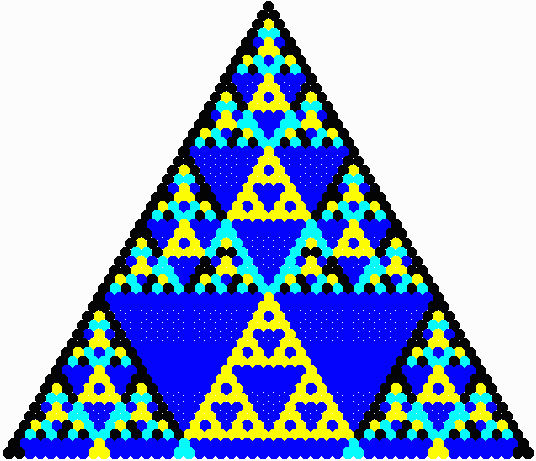
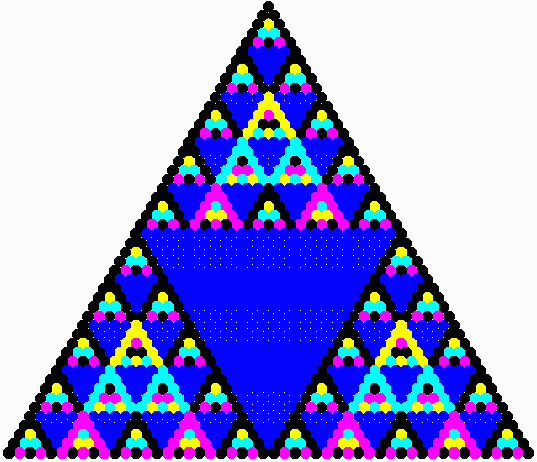
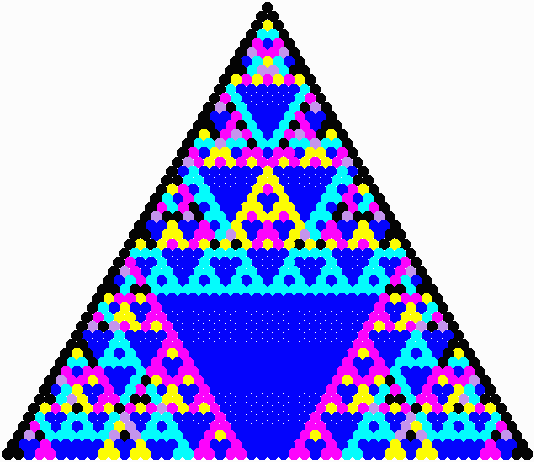
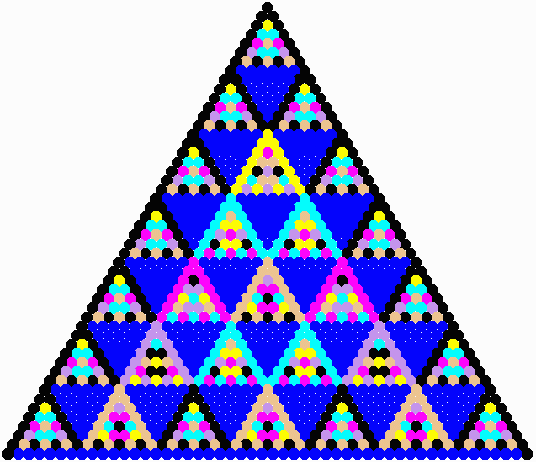
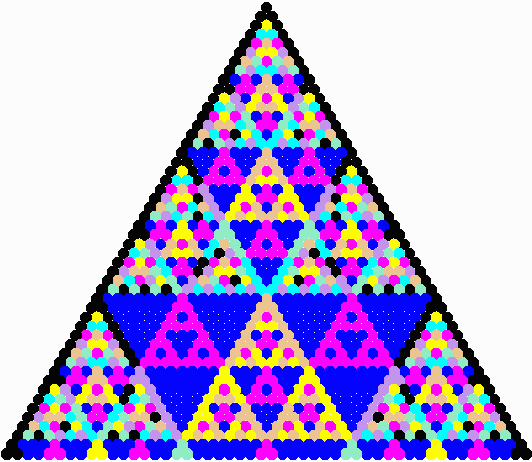
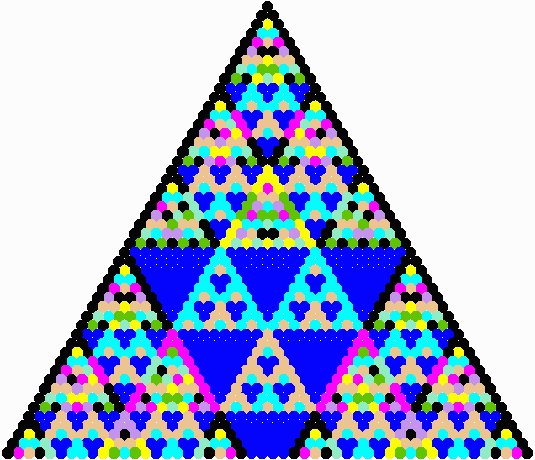
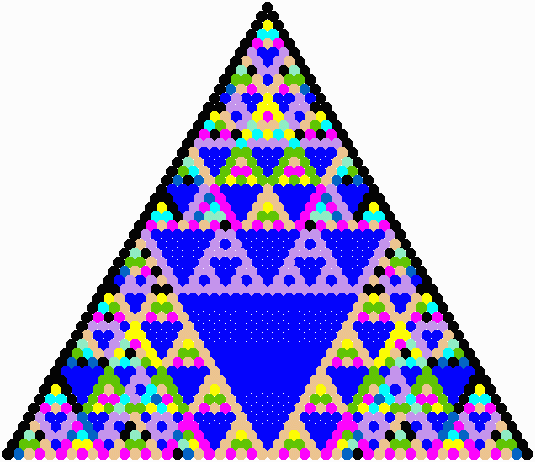
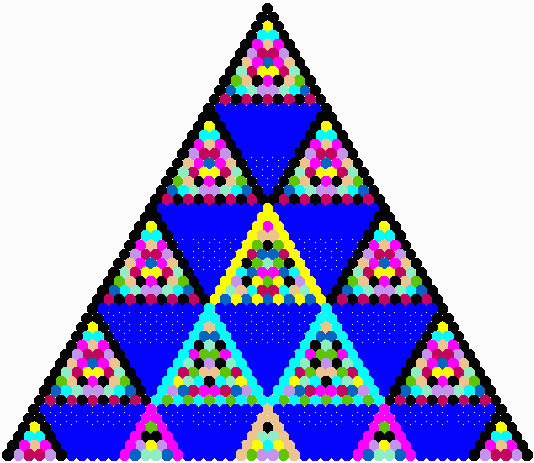
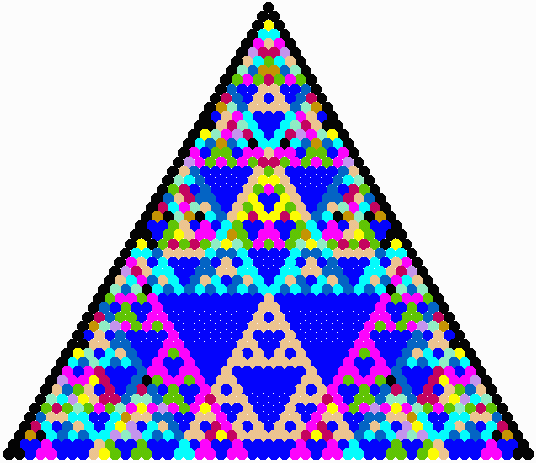

Here are the triangles mod n for n = 2, 3, 4, 5, 6, 7, 8, 9, 10, 11, and 12.
 |
 |
 |
 |
 |
 |
 |
 |
 |
 |
 |

|
 |
Now look at the n = 6 triangle.
Can you see a color identification that would transform it to the n = 2
triangle? How about to the n = 3 triangle?
Next look at the n = 8 triangle. Can you make an identification that would transform it to the n = 4 triangle? You could then make another identification to transform it to the n = 2 triangle.
Can you see identifications between other triangles? What is the pattern here? |
 |
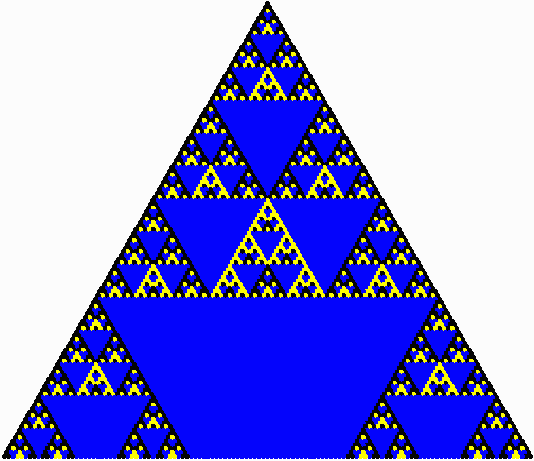 |
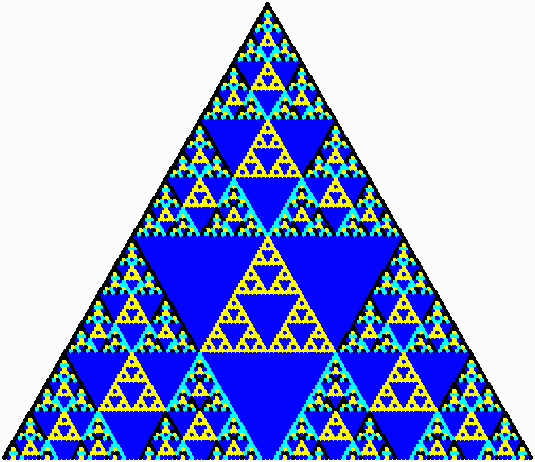 |
 |
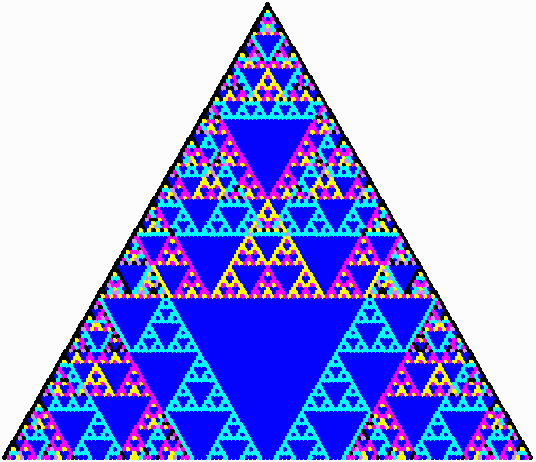 |
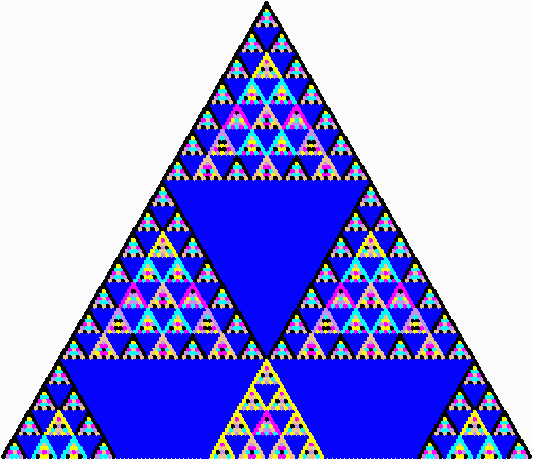 |
 |
 |
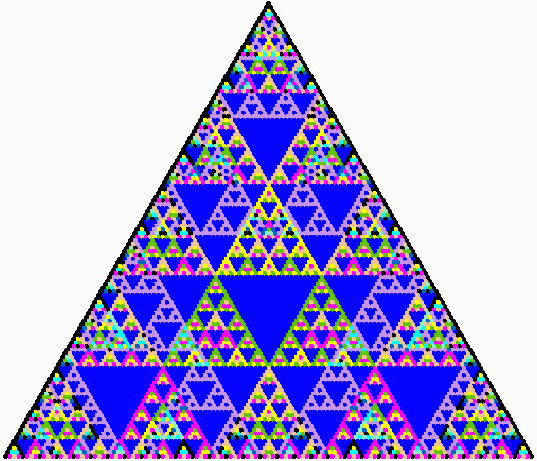 |
 |
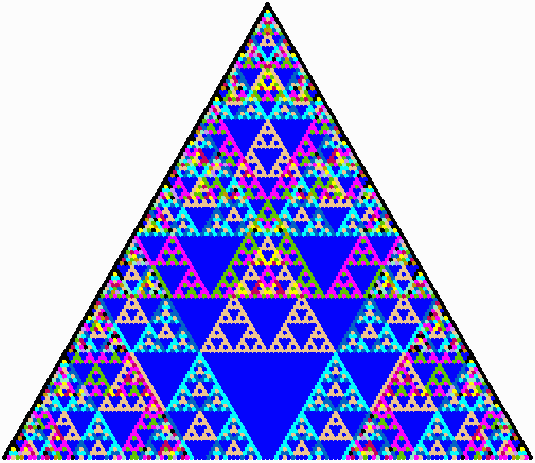 |

|
You probably noticed immediately the downward-pointing royal blue triangles in all of the patterns. Since royal blue corresponds to the number zero, you can see that, whenever you get a string of zeros on a row, this will generate a downward pointing blue triangle -- any entry below two zeros will be zero. But the non-zero entries on either end of the string will encroach one position on each side for each row.
For example, if you start with a row {1,0,0,0,0,0,1} and generate the following rows, you get:
1 |
|
0 |
|
0 |
|
0 |
|
0 |
|
0 |
|
1 |
|
1 |
|
0 |
|
0 |
|
0 |
|
0 |
|
1 |
|
|
|
1 |
|
0 |
|
0 |
|
0 |
|
1 |
|
|
|
|
|
1 |
|
0 |
|
0 |
|
1 |
|
|
|
|
|
|
|
1 |
|
0 |
|
1 |
|
|
|
|
|
|
|
|
|
1 |
|
1 |
|
|
|
|
|
|
|
|
|
|
|
2 |
|
|
|
|
|
|